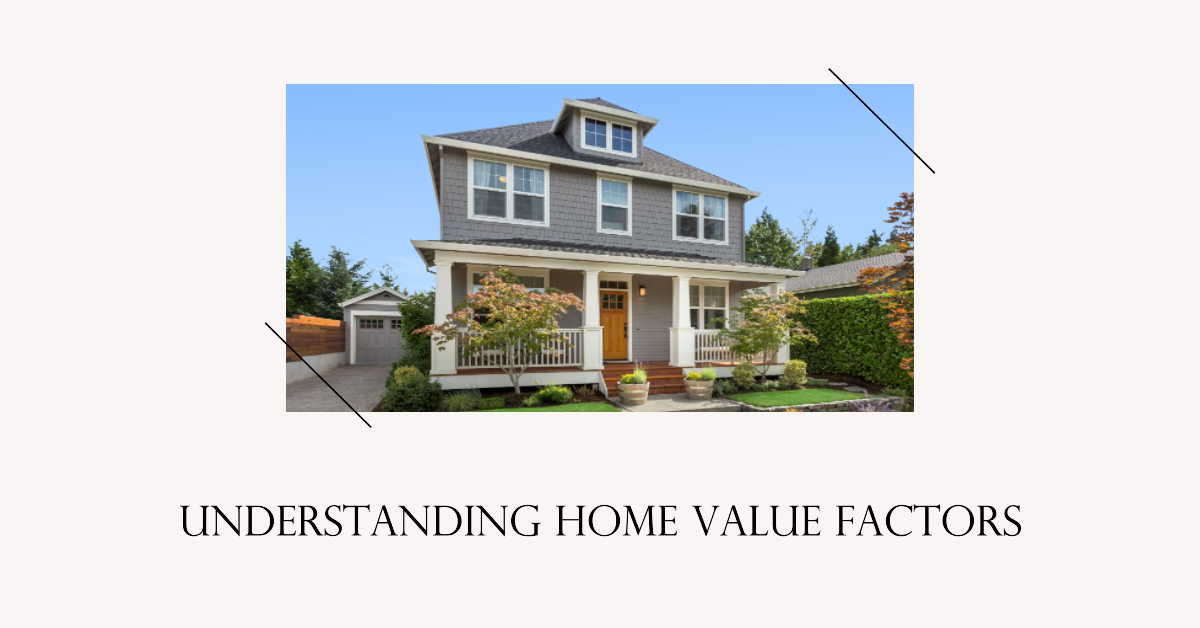I am a well-rounded expert with proficiency in several fields. My experience spans from being a dedicated chef and homemaker. As a passionate homesteader, I’ve honed my skills in sustainable living and animal care, ensuring a holistic approach to everything I undertake. Email me or Txt: (# removed due to spam, please email)
Introduction
As a homeowner or prospective home buyer, understanding how a house’s value changes over time is crucial.
One common concern is the age at which a house starts losing value due to depreciation. In this article, we’ll explore depreciation, inflation, and other factors that affect a home’s value as it ages.
By understanding these factors, you can make informed decisions about home maintenance, renovations, and property investments.

The Concept of Depreciation
Depreciation refers to the decline in value of a property over time, primarily due to wear and tear, outdated designs, or changes in the local economy.
There are three main types of depreciation: physical, functional, and economic. Physical depreciation results from the natural aging of building materials and systems, while functional depreciation is caused by outdated designs or technology.
Economic depreciation occurs due to factors outside the property, such as changes in the local economy or neighborhood desirability.
For example:
- Physical Depreciation: This type of depreciation occurs due to the natural aging of building materials and systems. Some examples of physical depreciation in homes include:
- Cracked or chipped tiles on the roof or floor
- Faded or peeling exterior paint
- Worn-out carpets or flooring
- Leaky or outdated plumbing fixtures
- Deterioration of the foundation or structure
- Functional Depreciation: This type of depreciation is caused by outdated designs or technology. Some examples of functional depreciation in homes include:
- Inefficient or outdated heating and cooling systems
- Poorly designed layouts that hinder flow and usage of space
- Small, outdated kitchens that lack modern appliances or storage
- Lack of sufficient electrical outlets or wiring (This one is a big deal in todays tech-addicted world)
- Inadequate insulation or outdated windows that result in energy loss
- Economic Depreciation: This type of depreciation occurs due to factors outside the property, such as changes in the local economy or neighborhood desirability. Some examples of economic depreciation in homes include:
- A sudden decrease in the value of homes in the area due to a local recession or job loss
- Proximity to high traffic or noisy areas, such as highways or airports, that affect home values
- An increase in crime or safety concerns in the area that lead to lower property values
- A decrease in school ratings or amenities in the surrounding area that decrease demand for homes in the neighborhood.

Age-Related Factors Impacting Home Value
The age of a home can have a significant impact on its value, as different types of depreciation can occur over time.
Physical, functional, and economic depreciation can all cause a home’s value to decline, and each of these types of depreciation can be influenced by age-related factors.
Physical depreciation is one of the most common types of depreciation that occurs in homes. Over time, building materials can become worn and damaged, leading to maintenance and repair costs that can impact the home’s value.
For instance, a home that has a roof that is more than twenty years old may require significant repairs or even replacement due to wear and tear. Additionally, the impact of age on a home’s structural integrity can also cause physical depreciation.
As a home ages, its foundation may settle or shift, leading to cracks or other issues that can affect its value.
Functional depreciation is another type of depreciation that can occur due to age-related factors. Homes that are older may have outdated designs and layouts that are not desirable for modern living.
For example, homes built in the 1950s may have small, closed-off kitchens that are not conducive to modern cooking and entertaining. Similarly, inefficient systems like heating, plumbing, and electrical can decrease a home’s value over time.
A home with outdated heating and cooling systems may be less desirable to buyers who want energy-efficient homes with modern amenities.
Economic depreciation can also occur due to age-related factors. A home’s value may decline due to changes in neighborhood desirability.
For instance, a neighborhood that was once popular may see a decrease in home values if there is an increase in crime or safety concerns. Additionally, local economic factors can also impact a home’s value.
If the local economy experiences a downturn, the value of homes in the area may decrease, making it more challenging to sell the property.
Finally, environmental factors can also impact a home’s value. Homes located in areas prone to natural disasters like flooding or earthquakes may see a decrease in value as potential buyers may be hesitant to invest in the property.
Similarly, homes in areas with severe weather conditions like hurricanes or tornadoes may experience higher insurance costs, which can affect the home’s overall value.
In summary, age-related factors can have a significant impact on a home’s value. Physical, functional, and economic depreciation can all occur over time, leading to decreased demand and lower property values.
Homeowners should be aware of these factors and take steps to maintain their homes to prevent depreciation and maximize their home’s value over time.

The Role of Inflation in Home Value
Inflation can play a role in the value of a home, but its impact on a property’s value is complex and multifaceted.
On one hand, inflation can cause home prices to increase over time, which can offset some of the effects of depreciation.
As prices rise due to inflation, the value of a home may increase, even if its physical condition deteriorates.
However, relying on inflation alone to maintain or increase a home’s value can be risky. Inflation rates can vary significantly over time, and they may not be enough to counteract the effects of depreciation fully.
For instance, while a 2-3% inflation rate may be typical in some years, other years may see higher inflation rates or even deflation. In such cases, relying on inflation alone to increase a home’s value may not be sufficient.
Moreover, high inflation rates can also lead to higher interest rates, which can negatively impact the housing market and property values.
When interest rates rise, borrowing costs increase, which can make it more challenging for buyers to afford homes. This can lead to a decrease in demand for homes, which can then lead to a decrease in their value.
Thus, the relationship between inflation and home values is complex, and homeowners should not rely on inflation alone to maintain or increase the value of their homes.
In addition, other factors can also impact the value of a home, such as location, economic conditions, and local market trends.
For instance, a home located in a desirable neighborhood may see an increase in value, regardless of inflation rates or physical depreciation. Similarly, a home located in a struggling area may see a decrease in value, even if inflation rates are high.
While inflation can play a role in the value of a home, it is only one of many factors that can influence property values. Homeowners should not rely solely on inflation to maintain or increase their homes’ value, but instead focus on regular maintenance, upgrades, and strategic investments in their properties.
By doing so, homeowners can maximize their homes’ potential for appreciation and ensure their long-term value in the housing market.

The Role of Maintenance and Upgrades in Home Value
Regular maintenance and timely upgrades play a significant role in preserving and increasing a home’s value.
A well-maintained property is more attractive to potential buyers, and it can also help mitigate the effects of depreciation, preserving the home’s value over time.
Regular maintenance involves keeping the property in good condition by addressing wear and tear, repairing damages, and preventing future problems. This can include tasks such as replacing worn-out flooring or carpets, repairing leaks, and repainting interior and exterior walls.
Routine maintenance can also include tasks such as cleaning gutters, servicing HVAC systems, and maintaining landscaping.
By addressing these issues promptly, you can prevent further damage, improve the overall appearance of the property, and increase its value.
Taking care of the outside of the property is just as important as maintaining the inside. The exterior of the home is the first thing potential buyers see and can greatly influence their perception of the property.
Regular maintenance of the outside of the home can include tasks such as cleaning the gutters, power washing the exterior walls, and keeping the roof and windows clean.
Additionally, taking care of the lawn and garden can also increase a home’s value and curb appeal.
Regularly mowing the lawn, pruning bushes and trees, and keeping the garden weed-free and well-maintained can greatly improve the overall appearance of the property.
Upgrades, on the other hand, involve making significant changes to a property to improve its functionality, efficiency, and aesthetics.
This can include updating outdated designs, systems, and amenities to meet modern standards and preferences.
For instance, upgrading a kitchen with modern appliances, adding energy-efficient windows, or installing a new HVAC system can increase a home’s value and appeal to potential buyers.
Similarly, adding features such as a pool, outdoor kitchen, or smart home technology can also increase a home’s value and desirability.
When planning upgrades, it’s important to consider the local market and preferences of potential buyers.
Upgrades that may be desirable in one area may not be as valuable in another. It’s also important to balance the cost of the upgrades with the expected increase in value to ensure that you’re making a sound investment.

Factors that Can Offset Depreciation
There are several factors that can offset depreciation and help maintain or even increase a home’s value over time.
Location and neighborhood desirability is one such factor. Homes located in desirable neighborhoods or areas with good schools, proximity to amenities, or low crime rates can maintain their value even as they age.
Homes located in areas with high demand and low inventory can also retain their value, as buyers compete for limited properties.
Market conditions and demand can also impact a home’s value. In a strong seller’s market, where demand exceeds supply, homes can appreciate rapidly, even if they have some physical or functional depreciation.
Conversely, in a buyer’s market, where supply exceeds demand, homes may experience slower appreciation, even with maintenance and upgrades.
Unique architectural features or historical significance can also help offset depreciation. Homes with unique design features or historical significance may be more desirable to buyers, leading to increased demand and higher value.
For instance, a historic home with original architectural features, such as crown molding or stained glass windows, can retain its value even as it ages.
In addition, the overall condition and appearance of the home can also impact its value. Homes that are well-maintained and updated with modern features can retain their value over time.
Upgrades such as energy-efficient appliances, smart home technology, and updated designs can make a home more attractive to buyers and can offset the effects of physical or functional depreciation.

Understanding the Age at Which a House Starts Losing Value
There is no definitive age at which a house starts losing value, as many factors influence the rate of depreciation.
However, regular maintenance, updates, and an understanding of the local market and inflation’s impact can help homeowners preserve or increase their property’s value over time.
Conclusion
In conclusion, understanding depreciation, inflation, and other factors affecting home value is essential for homeowners and prospective buyers alike. By staying informed about these factors and prioritizing regular maintenance and updates, you can make the most of your property investment and ensure its value remains strong over time.



